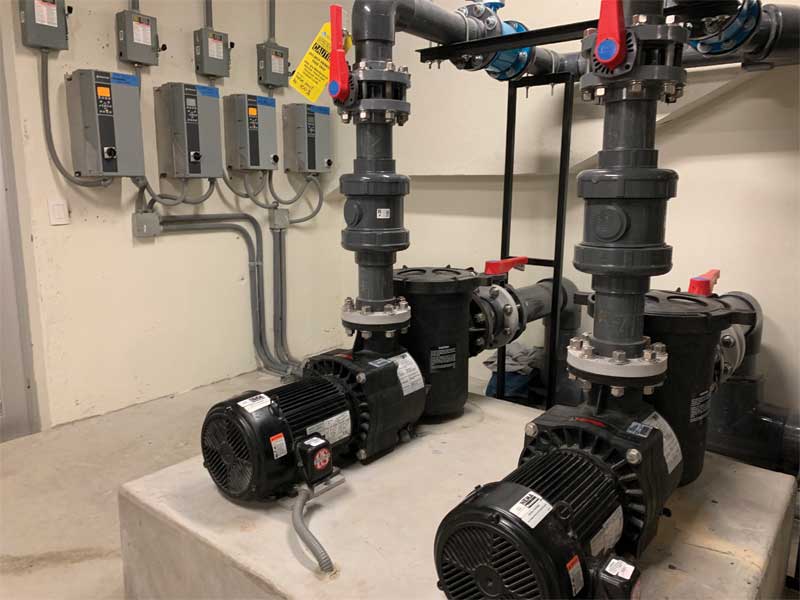Upgrading heaters for greater efficiency

Aquatic facilities can also reduce operating costs by upgrading to a new, high-efficiency heater. Older models from seven to 10 years ago may have initially been about 78 to 85 per cent efficient. However, over time, the same heaters will only be about 60 per cent efficient—as heat exchanger tubes fill with buildup, and the burners get clogged, too. That said, newer models have higher efficiencies. Today’s heaters are in the low-to-mid 90 per cent efficiency range (and some direct-fire models have efficiencies up to 95 per cent). As a result, these units consume less energy and will immediately lower electricity bills. Additionally, newer heaters are easier to operate, and produce lower emissions, resulting in better air quality in the pool environment.
Two main reasons for decreased efficiency of heaters include:
Buildup on heat exchanger tubes
This is the most common reason for decreased efficiency. When heat exchanger tubes build up with chemical residuals and calcium, it causes the unit to lower its water flow. This, in turn, causes the device to consume more energy to heat the same amount of water in the pool.
Condensation
When burned, propane and natural gas produce water as a byproduct. The combustion is then compromised because ‘raining’ condensate interferes with the flame pattern. This condensation causes inefficiencies in the heater functionality.
As mentioned earlier, in addition to operating more efficiently and lowering costs, upgrading pool heaters offers several other benefits.
- New heaters are designed to be ‘low nitrous oxide (NOx)’ units with minimal emissions, which is one of the main advantages of using improved equipment. Low NOx heaters are environmentally friendly as their nitrous oxide emissions are below 10 per cent. In some provinces, these units are required to have a regulated emission standard.
- These heaters are also easier to maintain as they are designed with ‘plug-and-play’ functionality. This can be extremely advantageous, especially because many installers are not trained in commercial application techniques. Further, aquatic facilities find pool cleaning staff, lifeguards, and managers adjusting heater settings frequently. Therefore, having a unit that is completely enclosed and ready-to-go, leaves less room for problems caused by staff members.
- Finally, new heaters have sealed combustion units, which make them safer to operate. Most units installed indoors are often located next to stored chemicals. If sealed, these devices are less of a fire hazard (even if chemicals are not present when the heater is installed, they might make an appearance later). Further, these devices also ensure adequate combustion air is available as the outside air is ducted with a sealed combustion unit.
Automation help: The controller
Facility operators must be aware that poor water can lead to low air quality. The latter can be a combination of improperly maintained water chemistry, an insufficient filtration system, and a non-functioning air-handling system. These are the typical reasons why chlorine molecules in pool water lose the battle against bacteria and give way to chloramines (NH2Cl), filling the indoor aquatic environment with bad-smelling, eye-irritating air.
If there is an insufficient supply of free available chlorine (FAC) to the pool, the existing chlorine combines with contaminants in the water to create NH2Cl. This process results in off-gassing, which is released into the air at the surface of the pool. It can also become trapped in the moisture that is evaporating to create a toxic soup in and around an indoor facility. Not only is this gas hazardous for swimmers (and all the people in the facility), it can also corrode the dehumidification system(s) and other pump room equipment.






